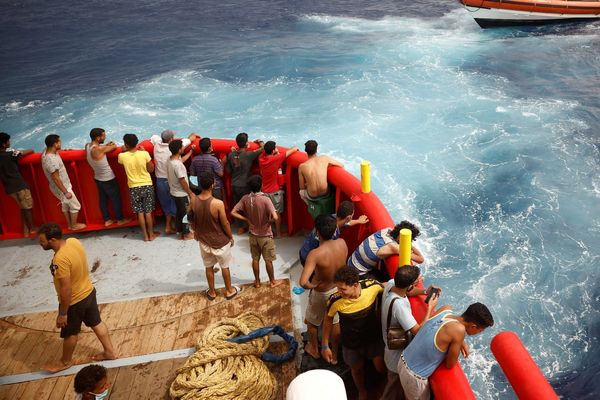
The PLA Navy’s unprecedented live-fire exercise 640 kilometres off the south coast of New South Wales, quickly followed by a second such exercise closer to New Zealand, was provocative and deeply regrettable. But it does not call for an immediate aggressive Australian response, it does not show that the Australian government’s diplomacy is failing, and it certainly does not indicate that Australia is helpless as China’s military power grows.
If this exercise somehow demonstrated that the government hasn’t been tough enough on China, then what would that say about the frequent foreign naval activity in waters off China’s coast?
For example, it is pretty well agreed these days that Beijing’s illegal artificial island-building campaign in the South China Sea has succeeded. China now exercises a high degree of control over that area, thanks to the overwhelming military and constabulary forces it has staged there, which can move around the area quickly.
Australia, along with its allies and partners, routinely sails warships through South China Sea waters claimed by Beijing. But would anyone seriously claim that Beijing’s policy in the South China Sea has therefore failed? Those transits are designed to make a political and legal point about the status of the waters. They don’t materially change the fact that China is defacto in charge there, and that in a shooting match it would start with a major advantage.
The lesson for Australia is to ensure that the same applies to China as its navy grows and, inevitably, it increases its activity near Australia. China needs to know that, while it is free to operate in those waters, it does so in the knowledge that, in the worst case, Australia can overcome whatever Beijing sends our way. That means building an Australian Defence Force focused tightly on the job of sinking ships and shooting down aircraft that threaten our landmass. Contra Alan Kohler, who wrote that “Australia would have no hope against China, as Beijing reminded us last week with live warship drills off the NSW coast”, that’s a job Australia is quite capable of doing, even without a reliable American ally.
Geography is Australia’s biggest asset in this regard. It’s over 7,000 kilometres from Sydney to Hainan Island, China’s southern fleet headquarters. China is clearly capable of sending a flotilla that far, but it’s an extremely taxing and expensive journey, and it is difficult for even the most capable navy to sustain forces at those distances.
Which makes it imperative for Australia to maintain its advantage by ensuring that China can never build military bases closer to Australia. In that regard, Australian policy has been rather successful lately, starting with the Pacific Step-Up under the previous government and continuing in more recent times with defence agreements with Nauru, Tuvalu and Papua New Guinea.
I’ve written previously about the need for Australia to adopt a stoical position on China. It can be tempting, in moments like these, to demand an immediate and forceful response. But let’s remember the lesson of China’s economic coercion campaign against Australia, which ended just last year. Australian policy ultimately succeeded not because the government was aggressive or obstreperous, but because it was quietly implacable. Over decades, Australia had built a resilient, globalised economy that could absorb the shocks China meted out. This allowed the Morrison and Albanese governments to pursue essentially the same policy: they never escalated the dispute, and they never backed down.
Provocations such as China’s weapons drills are the moments when stoicism is tested, when the temptation is to lash out because it fulfils a psychological need to feel like you’re doing something, and the political pressure to look like you’re doing something. But the right response is to continue the quiet work of making Australia into an echidna: unthreatening to those who mean the nation no harm, but prickly and indigestible to those who do.
• Sam Roggeveen is director of the Lowy Institute’s international security program. This article was originally published in The Interpreter







